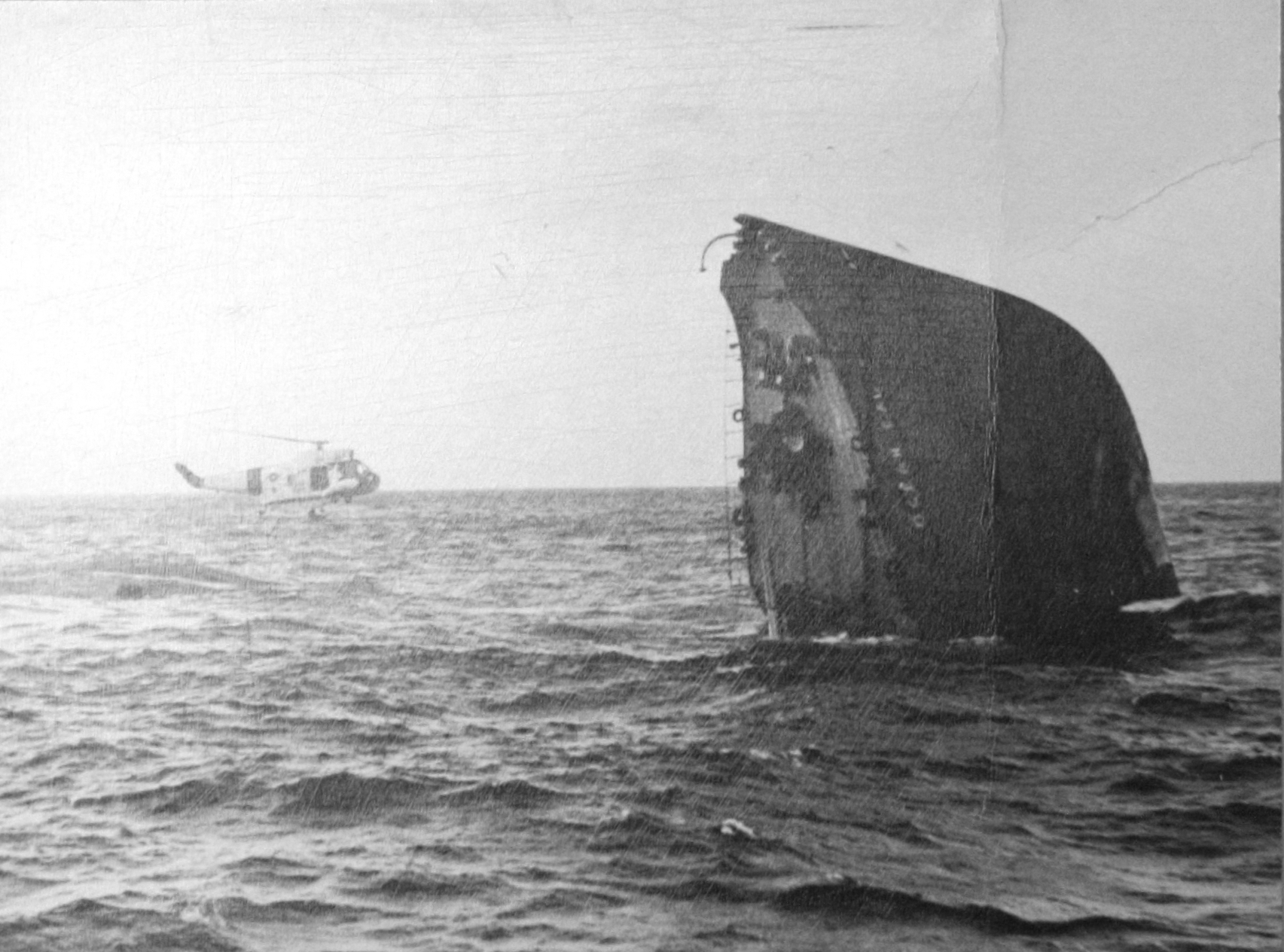U.S. Army Transportation Corps, Water Division hat badge
Three piece construction.
Stamped brass with gold wash and applied red paint on shield.
Gemsco (NY) hallmark.
Circa Second World War era.
At the mid-point of the Second World War, and as the U.S. military establishment turned greater attention and allocated more resources toward the task of fighting the Japanese Empire, the U.S. Army streamlined its marine operations. The three disparate services which comprised the Army’s water-borne forces came under the jurisdiction of the Transportation Corps. No longer was there an Army Transport (ocean going), Inter Island (Phillipine Island transports) nor Harbor Boat (intercoastal) Service; rather the all-inclusive Water Division. The insignia and uniforms of the previous services were cast aside in 1944, and division took a distinctly Navy look.
This hat badge is one of two designs worn by licensed ship’s officers.
References
Dave Collar. “Insignia of the Army Transportation Service in World War II.” ASMIC: The Trading Post October-December 1994: 29-43.
William K. Emerson. “Section XIII. The Army’s Navy: Chapter Thirty-Six. Army Transport Service and Harbor Boat Service.” Encyclopedia of United States Army Insignia and Uniforms. Norman, Oklahoma: University of Oklahoma Press, 1996. 331-352.
Steve Soto and Cynthia Soto. “A collector’s guide to the History, Uniforms and Memorabilia of the U.S. Merchant Marine and Army Transport Service during World War II.” Privately Printed, 1996 (revised 2008).
Published regulations from August 1945 call for a red shield; however, for expediency’s sake, many examples of this hat badge lack the red shield. There are several variations on the theme:
Shield with no color.
Shield with red paint.
Shield with red enamel over all (obscuring the stars and stripes underneath).
Shield with red enamel on alternating stripes.
The reason behind calling for a red shield can only be guessed at.
USATC-WD, Hat badge, obverse, detail.

Changes to Army Transport and Harbor Boat Service uniforms and insignia was an evolving process, reflecting not only organizational but logistics processes within the services, but also the U.S. Army.
For close to a half-century the ATS maintained its own culture, traditions and fashion, closely mirroring that of the Merchant Marine and distinct from that of the U.S. Army. As was common, young graduates of the various maritime schools and old salts alike would sign on with the ATS for a period of time, return to industry, and then go back to government service. Service aboard ATS ships was akin to work on commercial ships manned by Merchant Mariners. As a result, they both groups spoke the same jargon, shared the same age-old rituals and wore fairly similar uniforms of the trade.
After the end of the First World War, nautical garb in the United States followed the smart trends set in Europe, and those of Great Britain in particular – albeit with an American interpretation. Gone were the old chokers and pillbox hats; in their place were rolled collar coats, Windsor-knot ties and combination hats. In the staterooms of the larger ships, licensed officers wore sleeve lace; on deck and in the wheelhouse, their hats had handsome and beautifully embroidered hat badges in silk floss and bullion thread. As shoulder boards with branch colors became the rage in Europe, they too were adopted by the Merchant Marine, and by extension the ATS. Thus, uniforms aboard ship were familiar to others in the same trade the world over.
As the Second World War wore on, the United States garment industry was taxed to the limits of production. To increase production, many uniforms were standardized and organizations within the Armed and Government Services tended to take on similar (if not the same) insignia. The ATS was not immune to these changes. Within the Army’s water-borne services, the once distinct look to ATS uniforms changed as fabrics disappeared and the influx of mariners increased. Its ranks were augmented by the best and brightest graduates from U.S. Maritime Service schools, who brought their training uniforms along with them; ever thrifty and in an effort to build division-wide esprit de corps and professional appearance (read: military), Army regulations adapted the contemporary stock of uniforms and insignia. For licensed officers, the striking ATS hat badge was replaced with the Navy-style device as seen above; regulations called for red shield with a Transportation Corps device atop it. Shoulder boards were replaced with U.S. Navy-style boards with TC devices as opposed to a star. And, the service – now division – retained the distinct U.S. Army tradition of having insignia on coat lapels. The mariners were officially permitted to wear khaki uniforms – like their counterparts in the Maritime Service and U.S. Navy – bringing about a small constellation of insignia and devices.
The illustrated hat badge was worn primarily by ship’s officers (licensed mates and engineers) serving at the Army schools in Louisiana and Florida, and on ships plying the Pacific. It was worn for a couple of years, and was quite unpopular as insignia go.
Many mariners held-out changing their uniforms and adopting the new insignia; but, with the transfer of the division to the newly-formed and Navy-controlled Military Sea Transportation Service, it was follow regulations or leave.
In the future I will post more images of USATC-WD insignia and its successor service, the MSTS; it provides an interesting windows on the convergence of nautical insignia trends at the close of the Second World War and into the Cold War.





What price would these insignia fetch at auction?